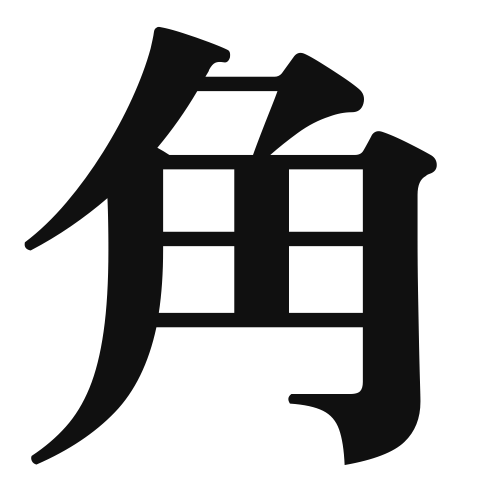1. Overview of Meaning
The kanji “角” (kaku) primarily means “corner” or “angle.” It can also refer to “horn,” as in the horns of an animal. This character is used in various contexts, both in everyday language and in specific fields such as geometry and zoology.
2. Formation and Radical
The kanji “角” is a phono-semantic compound (形声文字), which means it combines both a phonetic and a semantic component. The left part of the character, which resembles a horn, suggests its meaning related to “horn” or “angle.” The radical for “角” is also “角,” indicating its association with corners and angles.
3. Examples of Usage
Common words and phrases that include “角” are:
- 角度 (kakudo) – angle
- 角膜 (kakumaku) – cornea
- 角笛 (kakudai) – horn (musical instrument)
Example sentences in daily conversation:
- この部屋の角にテーブルがあります。
(There is a table in the corner of this room.) - この三角形の角度は90度です。
(The angle of this triangle is 90 degrees.)
4. Synonyms and Antonyms
Similar kanji with related meanings include:
- 隅 (sumi) – corner (more specifically, a nook or a hidden corner)
- 尖 (sen) – pointed (referring to something sharp or pointed)
Antonyms include:
- 平 (hei) – flat or level (indicating the absence of angles or corners)
- 直 (choku) – straight (referring to a straight line without angles)
5. Cultural and Historical Background
The kanji “角” has significant relevance in Japanese culture, particularly in traditional arts and crafts, where angles and corners are essential in design and architecture. It is also used in various proverbs and idiomatic expressions, such as:
- 角を矯めて牛を殺す (kaku o tamete ushi o korosu) – “To kill the cow by correcting the corner,” meaning to overcorrect a small issue and cause a larger problem.
This reflects the importance of balance and moderation in Japanese philosophy, where extremes are often viewed negatively.
